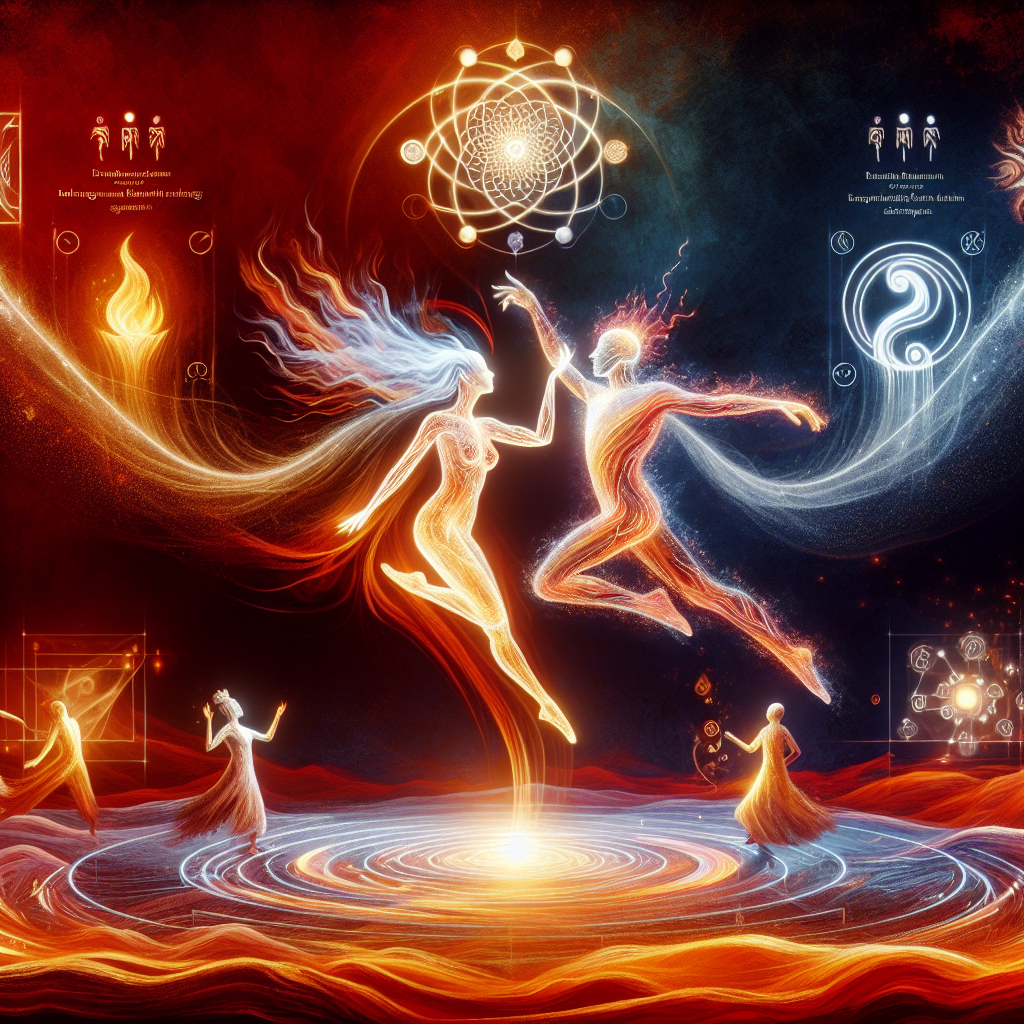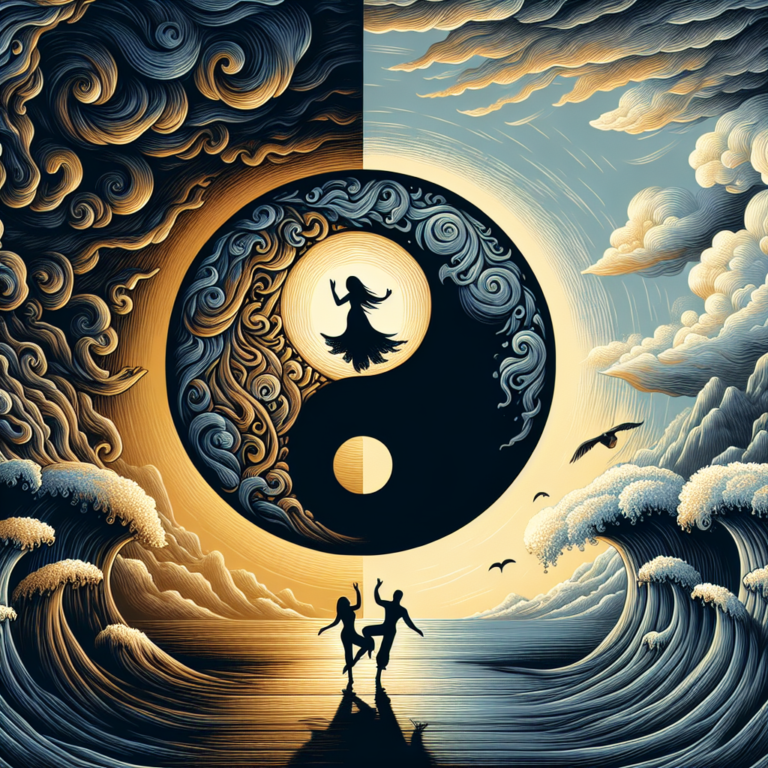The Dance of Karma: Understanding the Energy in Relationships
In the intricate web of existence, relationships serve as both mirrors and teachers. We often don’t realize that our interactions with others are imbued with energy—a vital force shaped by our actions, intentions, and beliefs. This energy is crucial in understanding karma, the law of cause and effect that governs our lives. In the dance of karma, every action creates a ripple that extends into our relationships. By understanding this dynamic, we can foster healthier connections and enrich our lives.
What is Karma?
Karma is a concept rooted in various spiritual traditions, primarily in Hinduism and Buddhism. It suggests that our thoughts, words, and actions create consequences that ultimately shape our realities. The term itself is derived from the Sanskrit word "karman," meaning "action" or "deed." In the context of relationships, karma can manifest as the energy exchanged between individuals, influencing everything from minor interactions to significant life events.
The Energy Flow in Relationships
Every relationship is characterized by energy—a combination of personal vibrations, histories, and emotional states. This energy can be positive, negative, or neutral; however, it is the quality of this energy that determines the health of the relationship. Positive energy fosters trust, compassion, and understanding, while negative energy can lead to conflict, resentment, and separation.
Positive Energy: When individuals approach their relationships with love, empathy, and respect, the energy exchanged tends to be uplifting. This creates a nurturing environment where both parties can thrive. Acts of kindness, active listening, and mutual support generate a positive karmic cycle, enhancing the bond and promoting growth for both individuals.
- Negative Energy: Conversely, when relationships are marked by dishonesty, manipulation, or neglect, the energy becomes toxic. Negative actions create karma that can lead to misunderstandings, emotional pain, and eventual breakdowns in connection. Recognizing these patterns is critical for healing and transformation.
The Cycle of Attraction and Repulsion
In the dance of karma, we often find ourselves in cycles of attraction and repulsion. This phenomenon can be explained through the law of attraction—an idea suggesting that like attracts like. If one radiates positive energy, they are more likely to attract individuals who resonate with that vibration. Similarly, when negativity permeates interactions, individuals may find themselves drawn to toxic relationships or caught in cycles of conflict.
Recognizing Karmic Patterns
To navigate the complex interplay of energy in relationships, awareness is key. Recognizing karmic patterns can provide valuable insights into our connections:
Patterns of Repetition: Do you find yourself drawn to the same type of partner, despite previous negative experiences? This may indicate unresolved karmic lessons that need to be addressed. Each relationship can serve as a teacher, offering opportunities for personal growth and healing.
Emotional Triggers: Pay attention to emotional responses that arise during interactions. Triggers often point to unresolved past experiences or traumas, revealing the underlying karmic energies at play. Understanding these triggers can enable us to respond more mindfully.
- The Role of Forgiveness: In the journey of understanding karmic patterns, forgiveness emerges as a powerful tool. Holding onto grudges or resentments can create a heavy karmic burden, hindering personal growth. By cultivating forgiveness, we can release negative energy, free ourselves, and move toward healthier interactions.
The Power of Intentions
Intention is a vital component in the dance of karma. When we consciously set intentions for our relationships, we enhance the quality of the energy we bring to them. Here are a few ways to harness the power of intention:
Mindful Communication: Approach conversations with clarity and purpose. Express your thoughts and feelings honestly while remaining open to the perspectives of others. Mindful communication can help clarify intentions and create a safe space for vulnerability.
Healthy Boundaries: Establishing boundaries is crucial for maintaining positive energy. Boundaries protect your emotional well-being and allow you to engage in relationships without overextending yourself. Clearly defined limits create a sense of safety and respect.
- Gratitude Practices: Acknowledging and expressing gratitude can elevate the energy in relationships. By focusing on the positive aspects and expressing appreciation for others, we cultivate an atmosphere of love and support.
The Gift of Karma
Understanding the dance of karma doesn’t just allow us to navigate relationships—it’s also a powerful opportunity for self-discovery and personal evolution. As we learn from our experiences, we can break free from negative patterns and create healthier, more fulfilling connections.
Learning from Challenges: Every challenge in a relationship serves as an opportunity for learning and growth. When difficulties arise, instead of viewing them solely as obstacles, shift your perspective. Ask yourself what you can learn from the situation.
Embracing Change: Karma frequently manifests as change. The end of one relationship may lead to the beginning of another or the evolution of the self. Embracing change allows us to let go of what no longer serves us, paving the way for new, positive experiences.
- Healing Generational Trauma: Many karmic patterns are inherited, passed down through generations. By recognizing and addressing these patterns, we can heal not only ourselves but also our families. This requires a commitment to breaking the cycle and creating a new legacy.
Conclusion
The dance of karma is a profound exploration of the energy we exchange in our relationships. By understanding the principles of karma and the interconnectedness of our actions, we can cultivate healthier, more meaningful connections. As we navigate the ups and downs of relationships, we have the power to transform our karmic lessons into stepping stones for personal growth and healing. Embrace the journey, and let the dance of karma enrich your life and relationships.
FAQs
What is karma in the context of relationships?
Karma in relationships refers to the energetic exchanges between individuals, shaped by their actions, intentions, and beliefs. Positive actions foster healthy connections, while negative behaviors can create toxic dynamics.
How can I recognize karmic patterns?
Karmic patterns often manifest as repeated cycles in relationships, emotional triggers, and unresolved issues. Reflecting on past experiences and acknowledging feelings can help identify these patterns.
How can I create positive energy in my relationships?
You can create positive energy through mindful communication, setting healthy boundaries, expressing gratitude, and approaching relationships with love and respect.
Is forgiveness necessary for healing karmic energy?
Yes, forgiveness is a vital component of healing karmic energy. Letting go of grudges and resentments allows for personal liberation and creates space for healthier interactions.
Can unhealed karma affect future relationships?
Absolutely. Unhealed karmic patterns can repeat themselves in future relationships, impacting your connection with new partners. Acknowledging and addressing these patterns is crucial for growth and healthier dynamics.
It looks like you entered “Prompt,” but it’s not clear what specific information or help you need. Could you please provide more details or specify a topic or question you’d like assistance with?, #Dance #Karma #Understanding #Energy #Relationships, #Dance #Karma #Understanding #Energy #Relationships, 1734309010, the-dance-of-karma-understanding-the-energy-in-relationships





